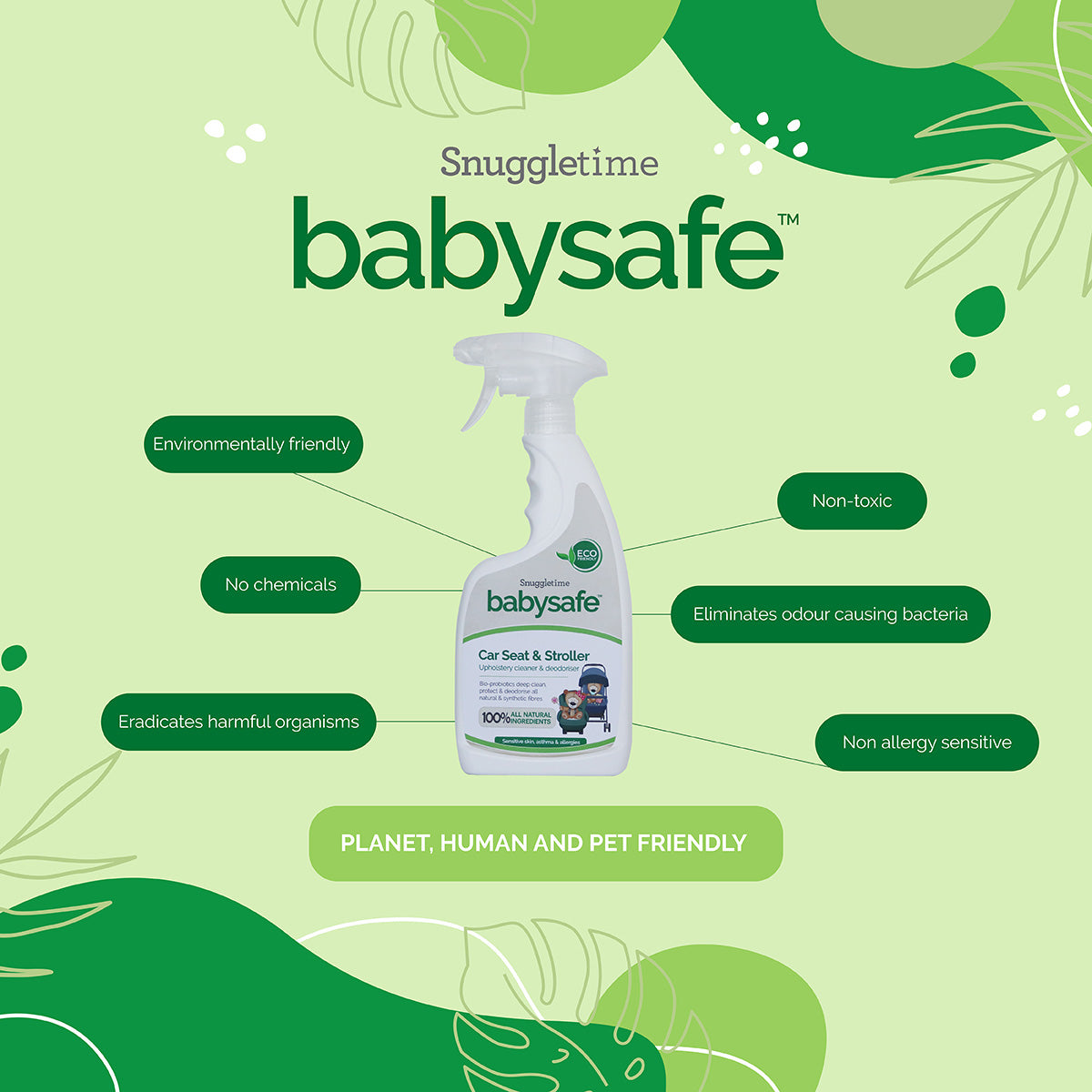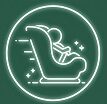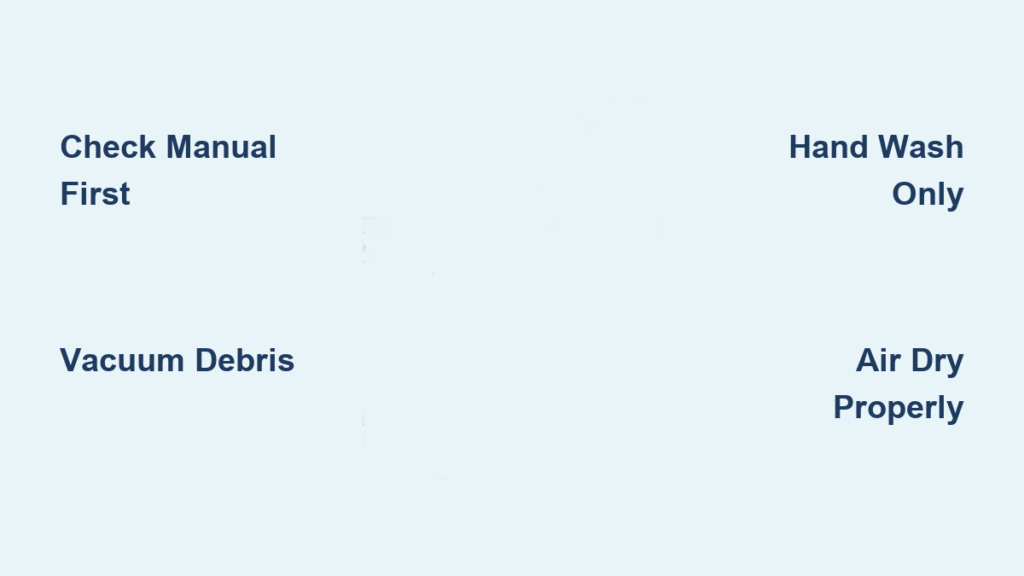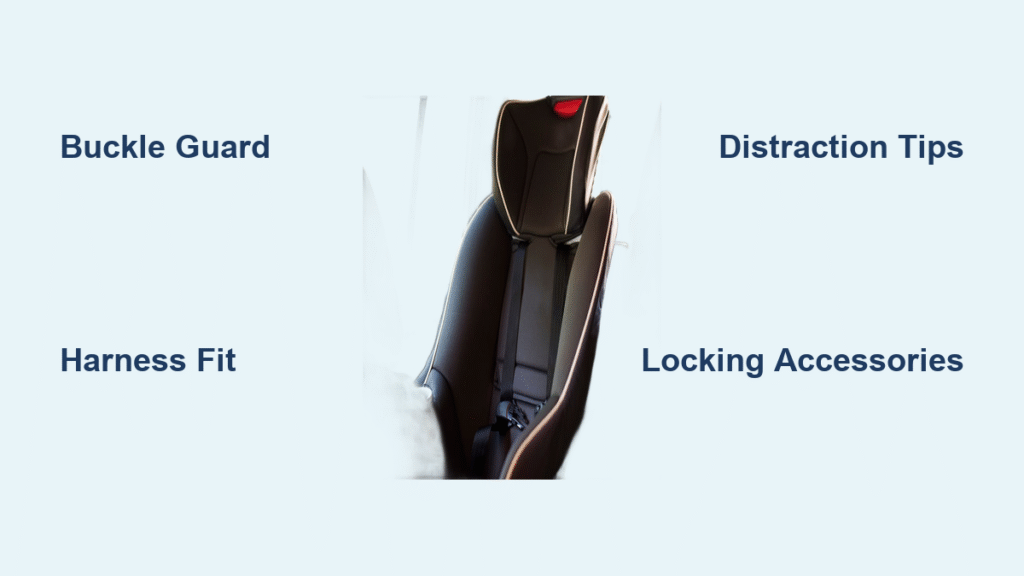Spit-up stains, juice spills, and playground mud are unavoidable realities of life with a stroller. Left untreated, these messes create germ hotspots that compromise your baby’s health and comfort. Knowing exactly how to clean baby stroller fabric transforms overwhelming messes into manageable tasks while extending your stroller’s lifespan. This guide delivers actionable, baby-safe methods for every stain scenario—from quick spot treatments to deep sanitization—using only pediatrician-approved products that protect delicate skin. You’ll learn precisely which fabrics can go in the washing machine, how to remove stubborn grass stains without damage, and critical drying techniques that prevent shrinkage.
Verify Stroller-Specific Cleaning Requirements
Locate Critical Manufacturer Instructions
Never assume cleaning methods—stroller brands have strict fabric care protocols. Immediately consult your physical manual or search the manufacturer’s website for digital instructions using your model number. Focus on four non-negotiable details: whether seat fabrics are machine-washable versus hand-wash only, exact water temperature limits (typically cold only), which components like rain covers require spot cleaning, and proper removal sequences for harness straps and foam inserts. If instructions are unclear, search YouTube for “[Your Brand] stroller fabric cleaning” to find official demonstration videos. Ignoring these specifications risks warping frames or voiding warranties.
Decode Fabric Care Labels
Examine sewn-in tags on seat covers, canopies, and storage baskets—they dictate your cleaning approach. Machine-washable labels (common on standard seat fabrics) allow gentle-cycle washing, while “hand wash only” tags (typical for mesh sunshades) require manual cleaning. Spot-clean-only fabrics include leather-look materials or premium upholstery where moisture causes damage. Crucially, identify non-removable sections like integrated headrests that demand in-place treatment. When in doubt, default to spot cleaning; aggressive methods can permanently stiffen or discolor fabrics.
Assemble Pediatrician-Approved Cleaning Tools

Build Your Baby-Safe Supply Kit
Gather these non-toxic essentials before starting: a handheld vacuum with crevice tool for debris removal, Seventh Generation Free & Clear dish soap for solutions, Babyganics Stain Remover spray for organic stains, soft-bristled toothbrushes for gentle scrubbing, and unscented Lysol Disinfectant Spray for sanitizing. Absolutely avoid bleach, fabric softeners, scented detergents, or abrasive tools like Magic Erasers that degrade fabric fibers. Store baskets and canopies need special attention—use Clorox Disinfecting Wipes only on non-fabric surfaces like plastic frames to prevent chemical transfer.
Eliminate Dry Debris Before Wet Cleaning
Vacuum Hidden Contaminants Thoroughly
Start with dry cleaning to prevent grinding particles deeper. Use your vacuum’s crevice tool to extract crumbs from seat seams, canopy folds, and harness strap connections—common germ reservoirs. For removable covers, turn them inside-out to vacuum seam pockets where snacks hide. Pay special attention to storage basket corners where food residue accumulates. This step removes 80% of contaminants before moisture application, significantly reducing stain setting.
Dislodge Stuck Particles Gently
For debris clinging to Velcro straps or zipper tracks, use a baby hairbrush with ultra-soft bristles. Work in small circular motions to avoid fraying fabric edges. Never scrape with hard objects—this damages protective coatings on sunshades. Test brushes on inconspicuous areas first; some mesh fabrics snag easily. This meticulous prep ensures wet cleaning targets only organic stains, not embedded dirt.
Machine Wash Removable Fabrics Safely
Execute Proper Washing Protocol
Only proceed if your manual confirms machine-washability. Remove all foam inserts, plastic stiffeners, and detachable buckles first—these cause imbalance during cycles. Wash fabrics separately in cold water (max 86°F) on delicate cycle using Seventh Generation detergent. Place small pieces like cup holders in mesh laundry bags to prevent tangling. Overloading stretches seams, so wash one component at a time.
Avoid Catastrophic Drying Mistakes
Never use a dryer—heat melts synthetic fibers and shrinks cotton blends. Immediately reattach damp fabrics to the stroller frame after washing. This maintains structural integrity by preventing warping during air drying. Position in a shaded, well-ventilated area for 2-24 hours (depending on humidity), rotating every few hours for even drying. Check seams with your fingers; residual moisture inside layers breeds mold.
Hand Clean Non-Removable Fabric Sections

Target Stains with Precision
For fixed fabrics like integrated headrests, spray Babyganics Stain Remover directly on messes. Wait 5-10 minutes for enzymes to break down organic matter—never rub vigorously. Mix 1 tsp dish soap with 1 cup warm water, then dip a microfiber cloth (wring until barely damp). Gently wipe in circular motions from stain edges inward to avoid spreading. Rinse by dabbing with clean water on a fresh cloth.
Deep-Clean Entire Surfaces Methodically
For full fabric cleaning, sponge soapy solution onto the entire seat area, focusing on high-contact zones where baby’s hands and face rest. Use a soft toothbrush for textured fabrics, working in the direction of the weave. Immediately follow with a water-rinsed cloth to remove soap residue—leftover suds attract new dirt. Blot dry with paper towels; never leave fabrics damp longer than 30 minutes to prevent mildew.
Sanitize Without Chemical Exposure
Steam for Chemical-Free Germ Elimination
After cleaning, use a garment steamer held 2 inches from fabrics for 30 seconds per section. Steam penetrates fibers to kill 99.9% of germs without residue—critical for babies with eczema or asthma. Avoid holding too close; excessive moisture causes water spots. This method works on all fabrics, including delicate mesh canopies where sprays might seep into frames.
Eradicate Common Stains Immediately

Handle Bodily Fluid Emergencies
For urine accidents, blot excess immediately with paper towels, then saturate with enzyme cleaner. Let sit 15 minutes before wiping—this neutralizes odors at the source. Vomit requires removing solids first with a scraper, then applying stain remover for 20 minutes. If fluids soaked through to padding, professional cleaning is essential to prevent bacterial growth in foam layers.
Neutralize Outdoor Messes Effectively
Mud must dry completely before brushing off excess—wetting it creates mud paste that sets permanently. Treat grass stains by applying stain remover, waiting 10 minutes, then gently scrubbing with a soft brush. For sunscreen residue (notoriously oil-based), use dish soap solution as it cuts grease better than laundry detergents.
Dry and Reassemble to Prevent Damage
Follow Critical Air-Drying Sequence
Reattach damp fabrics to the stroller frame within 15 minutes of washing to maintain shape. Position in indirect airflow—never in direct sun (fades colors) or near heaters (cracks fibers). Check harness strap interiors with a flashlight; hidden moisture there causes mold. Full drying takes 6-12 hours; test by pressing fabric—if coolness remains, wait longer.
Verify Safety During Reassembly
Reattach components in reverse removal order. Test every mechanism: fold/unfold the frame 3 times to ensure smooth operation, confirm brakes engage fully, and check harness buckles click securely. Spin wheels to verify lubrication wasn’t washed away (add silicone spray if squeaking). Never use the stroller until all parts are bone-dry—damp straps weaken over time.
Implement Proactive Maintenance Habits
Adopt the 3-Tier Cleaning Schedule
Daily: Brush crumbs from seats with a dry baby brush after each outing. Weekly: Vacuum storage baskets and wipe sticky spots with water-dampened cloths. Seasonally: Remove all fabrics for deep cleaning and sanitize wheels with disinfectant wipes. This prevents buildup that turns minor spills into permanent stains.
Store to Maximize Longevity
Always store completely dry in climate-controlled spaces. Fold with canopy open to prevent crease damage. In humid areas, use breathable cotton covers—not plastic—which trap moisture and cause mildew. Elevate off concrete floors to avoid rust on metal components. Proper storage cuts deep-cleaning frequency by 50%.
Recognize When Professionals Are Essential
Identify Unmanageable Situations
Call specialists for mold/mildew growth (indicated by black spots or musty smells), bodily fluids penetrating foam padding, or luxury strollers with non-standard fabrics like Alcantara. Antique models also require experts who understand vintage materials. Attempting DIY on these risks permanent damage.
Vet Cleaners for Baby Safety
Ask: “Do you use fragrance-free, hypoallergenic products?” and “How do you sanitize without harsh chemicals?” Reputable services steam-clean fabrics and provide 48-hour turnaround. Avoid any company using bleach or offering “same-day” drying—this indicates unsafe heat methods.
Clean stroller fabric isn’t cosmetic—it’s a health necessity. Following this precise how to clean baby stroller fabric protocol eliminates hidden pathogens while preserving your investment. By integrating daily debris removal and seasonal deep cleans, you’ll avoid overwhelming messes and extend your stroller’s life by years. Remember: when in doubt about fabric care, default to gentler methods—your baby’s sensitive skin will thank you. Start implementing these steps today for worry-free strolls tomorrow.





